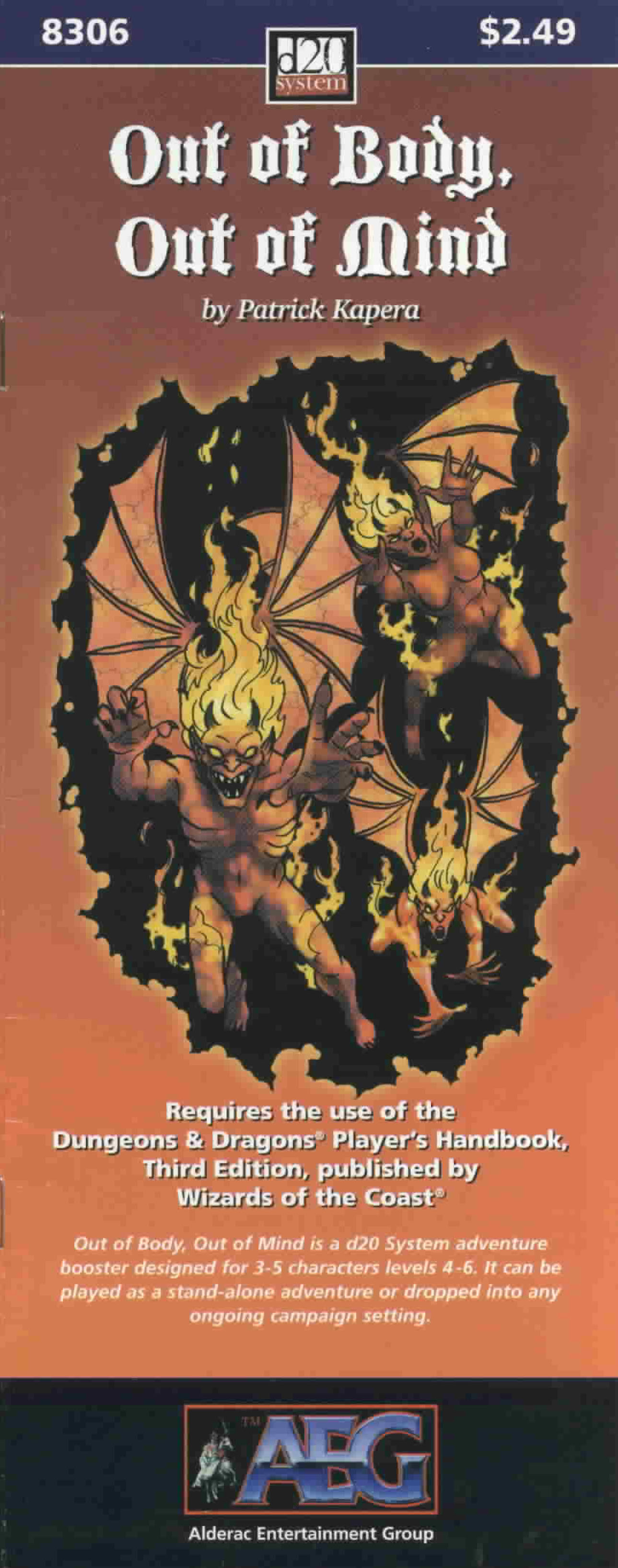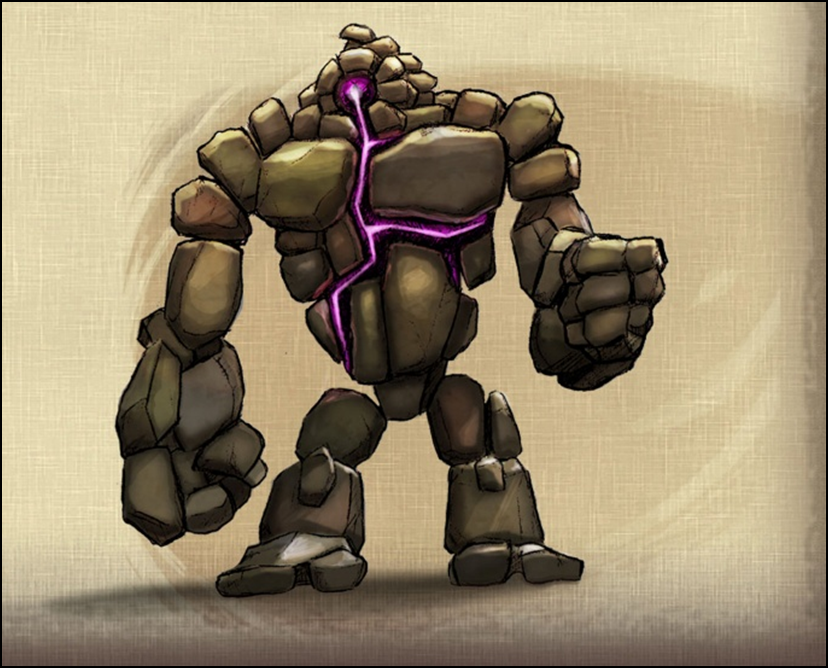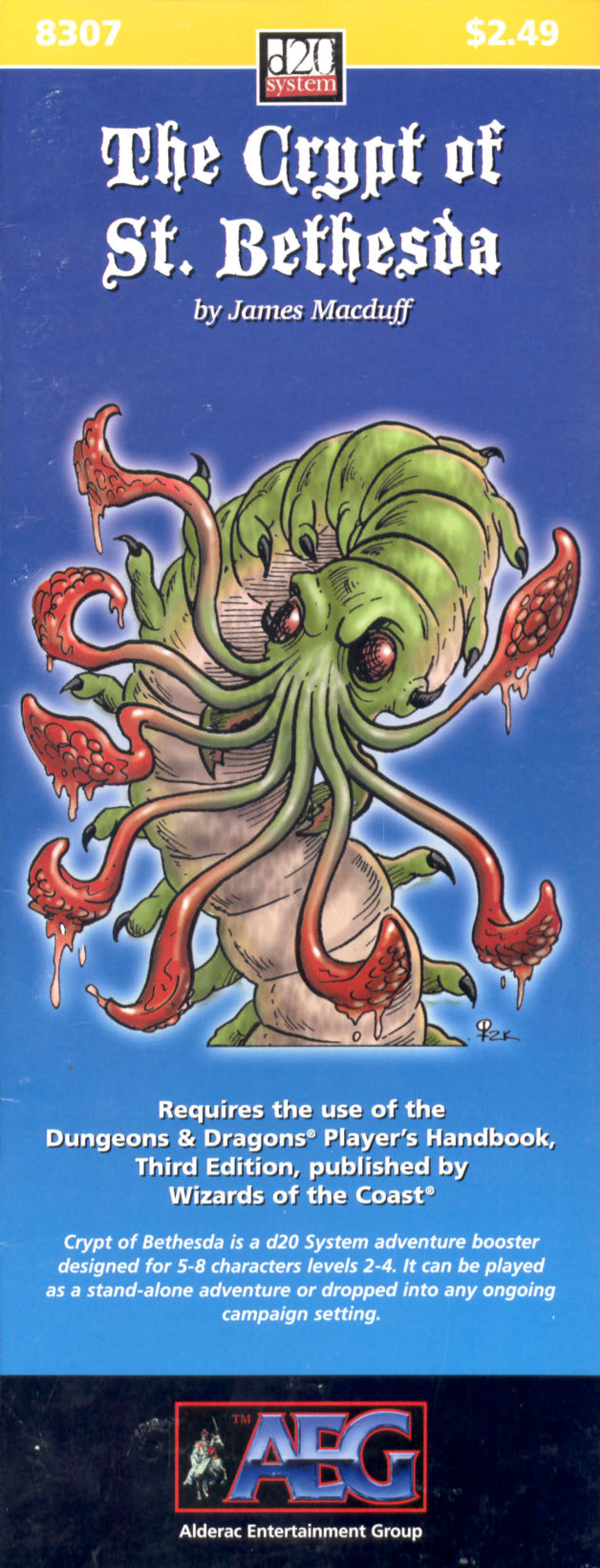Out of Body, Out of Mind fails to think things through to their logical conclusions. A poorly conceived premise, killer traps, and an irrational set-up seriously undermine this module’s positive qualities.
Review Originally Appeared May 21st, 2001
PLOT
Warning: This review will contain spoilers for Out of Body, Out of Mind. Players who may find themselves playing in this adventure should not read beyond this point.
The plot of Out of Body, Out of Mind, in brief: Six hundred years ago this area of the world was a turbulent mass of fighting warlords. Then, one of their own numbers – Tirna’gael – gained in sudden strength and struck out against his fellow warlords, quickly coming to dominate the entire region before his death. The newly formed Order of Garadon entombed the warlord in his citadel: A castle of stone which hangs over the simmering cauldron of a volcano.
Although it is believed that the source of Tirna’gael’s power was the ring he wore, the Order of Garadon had actually discovered that Tirna’gael had become the host of a nescent – an invisible and incorporeal demonic entity which exists by possessing mortal bodies. The Order trapped the nescent by slaying the Tirna’gael host body and imprisoning it within an antimagic field.
Rumors now fly that the tomb – which has long been secured by mystic guards – has been broken into. The PCs are dispatched to stop the robbers. Unknown to the PCs, however, is that there is no robbery in process – and it is very likely that they will break the ancient seals on the nescent’s prison through their carelessness.
WEAKNESSES
All right, where to begin?
Let’s start with the premise… which makes no sense. First off, why wouldn’t the Order of Garadon brief the PCs about the true situation? More importantly, why isn’t the Order of Garadon sent in the first place – rather than handing the job over to the clueless? Second, if rumors are already flying about the break-in, why are the PCs dispatched to go to the prison in order to prevent the robbery that’s already happened from taking place?
Once the PCs reach the prison, these illogical premises continue unabated. For example, the mephits which were set to guard the prison don’t wake up until after the tomb has been opened and the nescent released. Apparently the author never understood the irony behind the saying “closing the coop after the chickens have flown.”
Nor is this the only variety of flaw in Out of Body, Out of Mind: Area 7, for example, has a killer trap. That trap can be avoided if a couple of die rolls are successfully made – otherwise it will most likely wipe out the entire party. The trap in area 9 is similarly designed so that escape is nearly impossible.
Out of Body, Out of Mind also uses the technique of keying multiple areas to a single set of text. I appreciate this technique when it is used appropriately. Unfortunately, it is not used so here.
STRENGTHS
Although outweighed by the adventure’s flaws, Out of Body, Out of Mind does have a few notable strengths:
First, Kapera creates the nescent by using the template rules. This idea of using the template as the monster is intriguing, and an interesting design point. I’m not quite sure if it works, but it’s noteworthy.
Second, although it is illogical for the mephit guardians to wake up only after the damage is done, once that happens Kapera introduces a rather interesting dynamic: The nescent will attempt to possess one of the mephits and control as many of the others as possible through its command lesser creatures ability – creating two factions within the fortress. This creates an interesting dynamic for the second half of the adventure (with the PCs trapped in a fortress full of fighting mephits), and if it had been more fully developed could have resulted in a truly fascinating adventure.
Of course, as interesting as it is, it only introduces a new problem into the adventure: Why would you set guardians over the nescent who can be controlled by the nescent? That’s like manning a prison with guards you know have been bribed by the prisoners.
And, at the end of the day, that’s the biggest problem Out of Body, Out of Mind has: The strengths it has are immediately undermined by the faulty foundation on which they have been built.
There are some salvageable elements to be found here, but they are deeply buried beneath the chaff.
Style: 3
Substance: 3
Author: Patrick Kapera
Publisher: Alderac Entertainment Group
Line: Adventure Boosters
Price: $2.49
Product Code: 8306
Pages: 16
Next AEG Booster Review: Jerimond’s Orb
For an explanation of where these reviews came from and why you can no longer find them at RPGNet, click here.

















